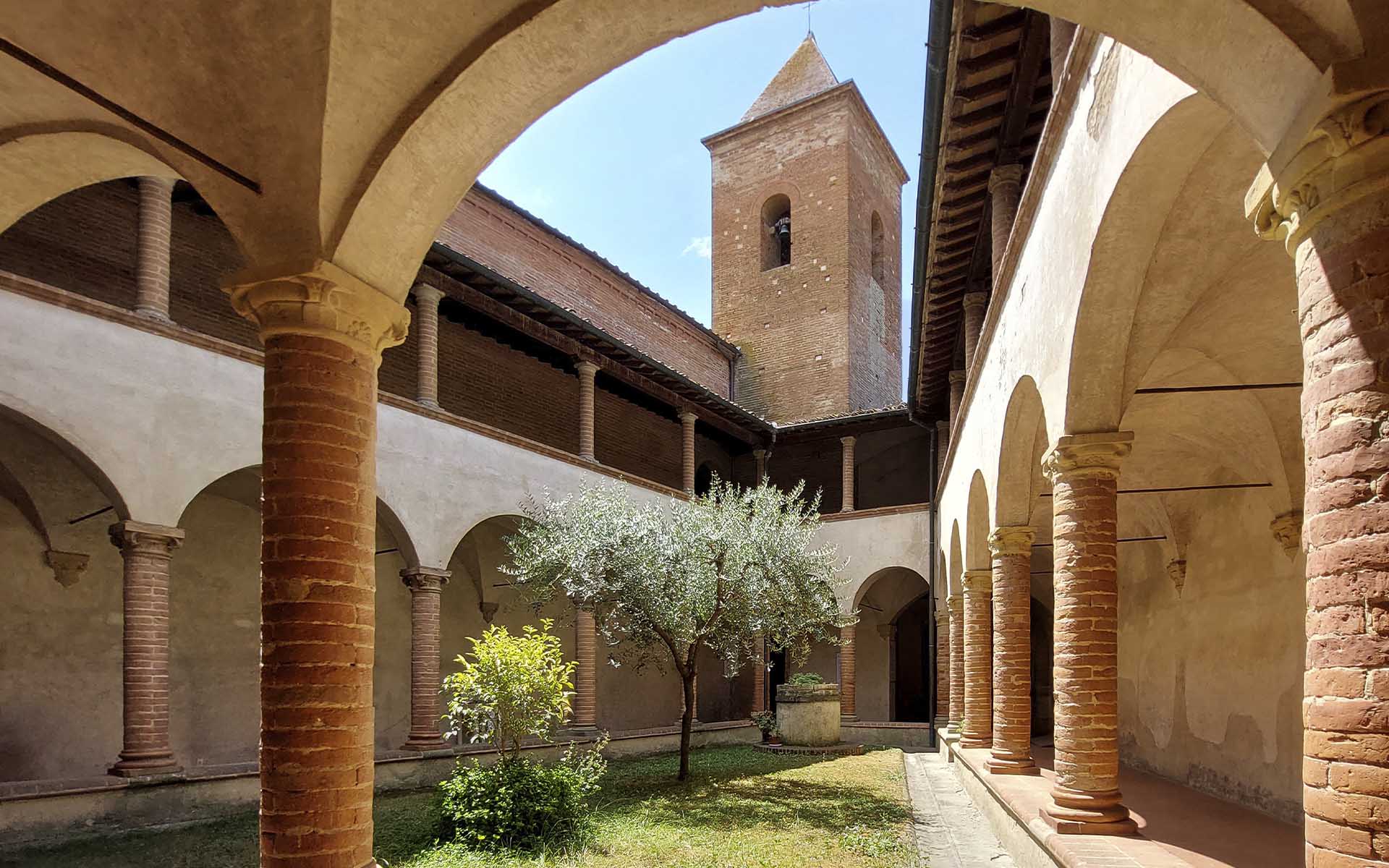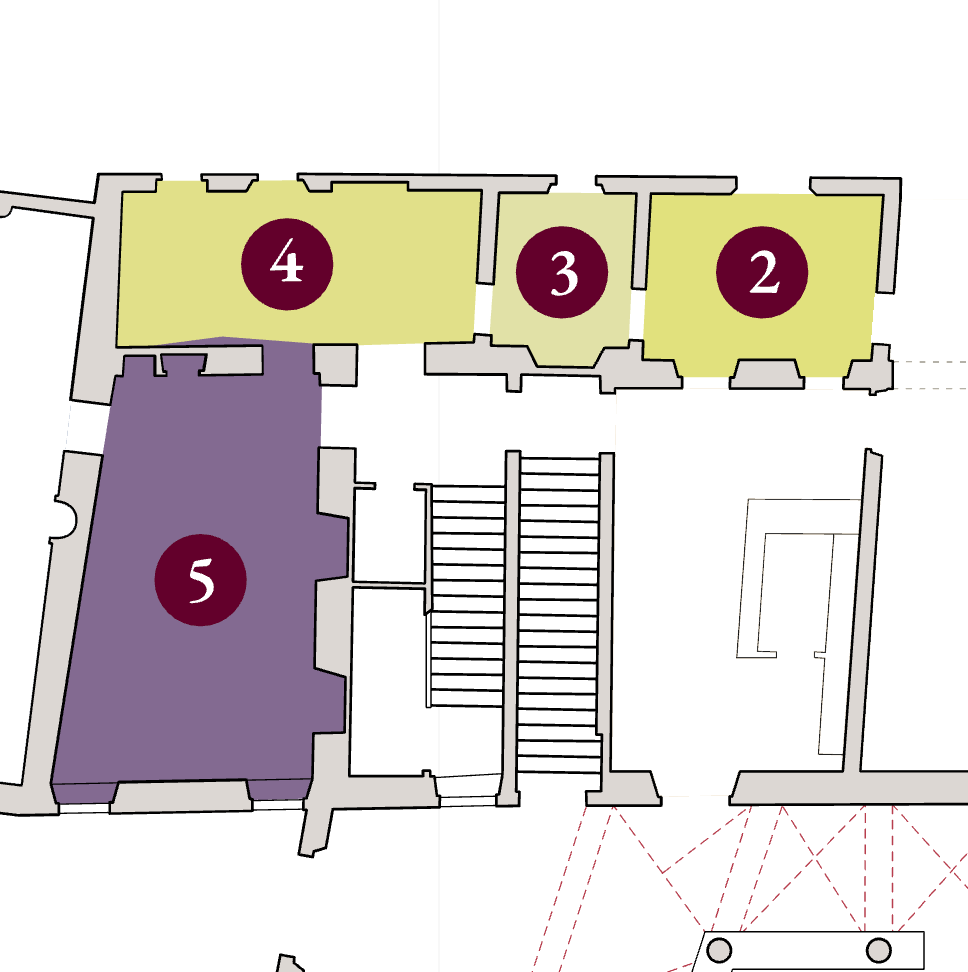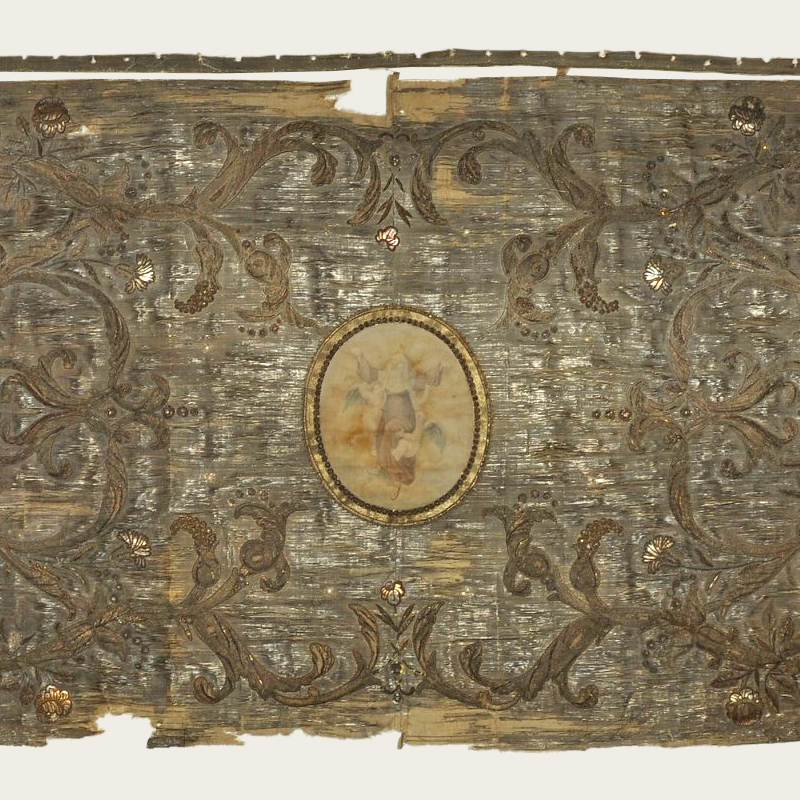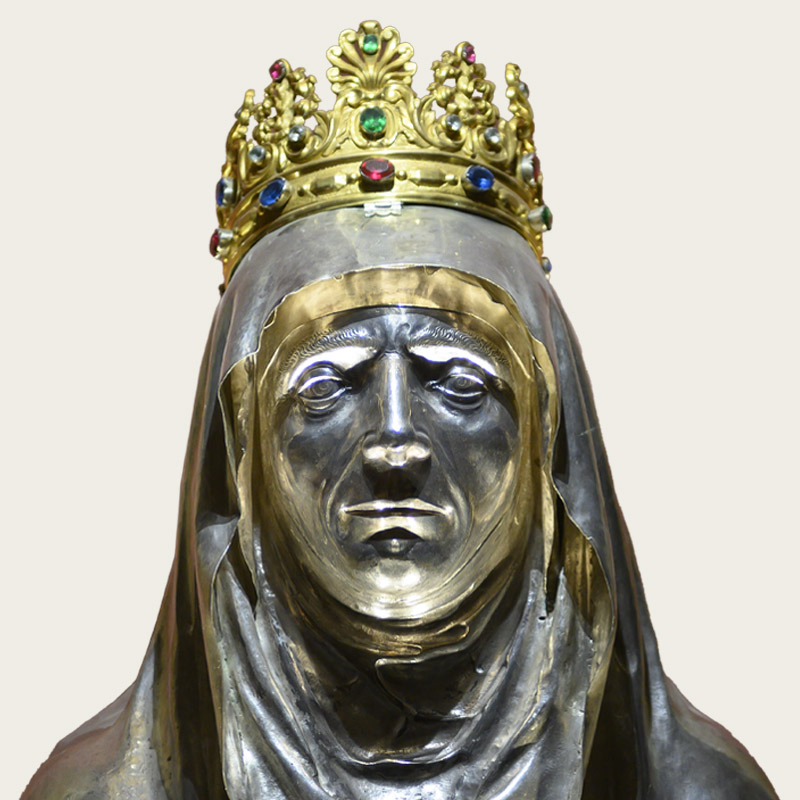Three rooms are dedicated to goldsmithing, sacred objects and liturgical vestments, arranged according to the churches they belong to. The oldest pieces are those from San Lazzaro in Lucardo, commissioned by the Gianfigliazzi, a wealthy family of usurers who owned the castle of Santa Maria Novella near Certaldo. Some remarkable examples are the 1496 goblet adapted to pyx in the 18th century and the pax with an articulated representation of the Madonna with Child with two musicians and the Resurrection of Christ on the lintel bezel, attributed to the sculptor and architect Antonio Averlino, known as “il Filarete”, spokesman in Florence for the goldsmith’s art learned during his apprenticeship in Ghiberti’s workshop. The oldest piece is 13th century incense burner coming from San Gaudenzio a Ruballa, valuable for its rarity.
Baroque silverware, executed in part by Florentine workshops in vogue in the 18th century, is accompanied in the second room by a core of neo-Gothic objects coming from the new church of San Tommaso in Borgo, the lower, modern part of Certaldo.
Among the liturgical vestments, worth mentioning is the vestment consisting of two cassocks, a cope and a chasuble made of chiselled silk velvet on silver cloth, dating to the second half of the 16th century, worked in thistle flower and pomegranate motifs, according to a very popular pattern in Florence after the arrival from Spain of Eleonora da Toledo, Cosimo I de’ Medici’s wife.
The collection includes a copious number of astylar crosses made of gilded copper dating back to the 13th century, obtained from engraved and gilded copper plates of minimal thickness, so called because they are equipped with a long extension of the lower arm, useful for skewering them during sacred rites to let the devoted people participate in the Christian value of the sacrifice of the Son of God on earth. Very popular in northern Europe, these crosses spread widely throughout Tuscany thanks to the arrival of transalpine models or artists, giving life to manufactures devoted to their production.







